
Models of Communication Shannon Weaver and Wendell Johnson's Model
The Shannon Weaver Model is a widely-used communication model that dissects the process into constituent elements, making it easier to understand and identify flaws in communication. Originating from the mathematical theory of communication, the model consists of seven key components: Sender Encoder Channel Noise Decoder Receiver Feedback
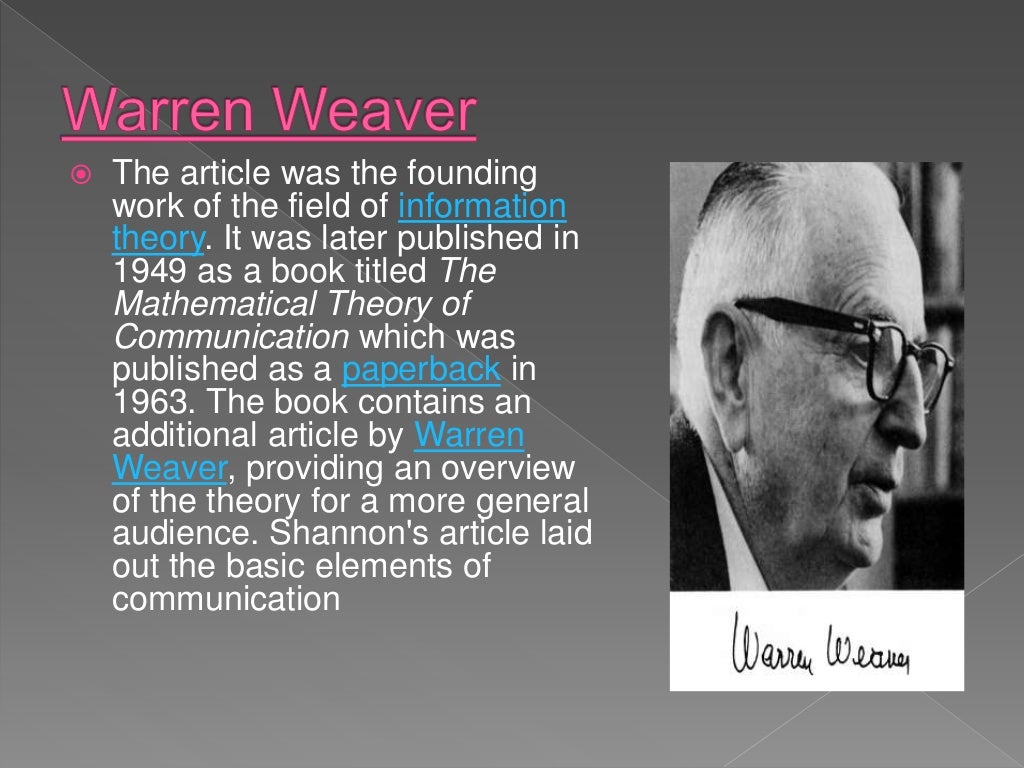
Shannon and weaver model of communication
Shannon and Weaver model is the most popular model of communication and is widely accepted all over the world. Let us first go through the following example to understand the model better. Peter is working as Vice president - Marketing with a reputed multinational firm. He is currently heading Mike who in turn is taking care of a small team.
Communication Studies Database The ShannonWeaver Model of Communication
The Shannon and Weaver Model of Communication is a mathematical theory of communication that argues that human communication can be broken down into 6 key concepts: sender, encoder, channel, noise, decoder, and receiver.
Nature of Communication Salient Points StudentNiche
Shannon-Weaver model is a theory that Warren Weaver and Claude Shannon created in 1948. It is a mathematical model which describes how communication happens from a sender to a receiver..
1 Shannon and Weaver's communication model. Reproduced from [Shannon,... Download Scientific
The Shannon and Weaver model of communication might give you the answer. Our guide explores this famous communication theory, its history and how you can use it to improve your interactions at work and ensure your requests are understood. The History of the Model

Shannon and Weaver’s (1954) Model of Communication Clement's blog
Shannon and Weaver's model Source: A Dictionary of Media and Communication Author(s): Daniel Chandler, Rod Munday. The most well-known and influential formal model of communication, developed in 1949 by Claude Shannon and Warren Weaver (see
Shannon And Weaver Model Of Communication Diagram Seputar Model
The Shannon-Weaver model is one of the first and most influential models of communication. It was initially published in the 1948 paper A Mathematical Theory of Communication and explains communication in terms of five basic components: a source, a transmitter, a channel, a receiver, and a destination. The source produces the original message.
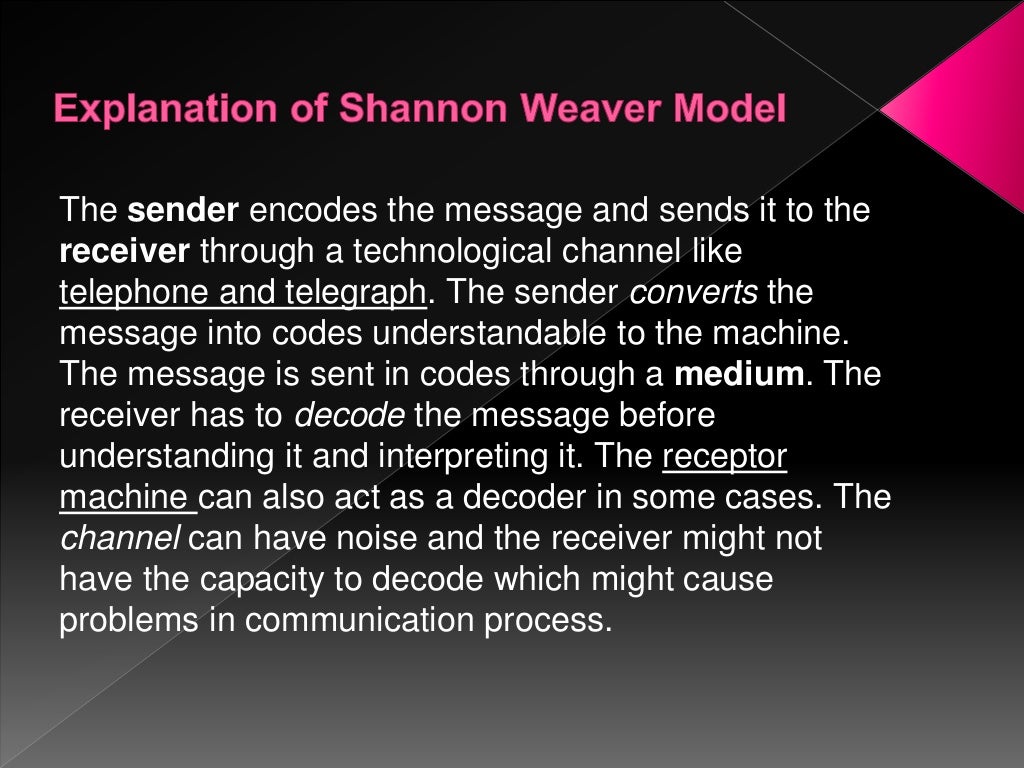
Shannon and weaver model of communication
Shannon Weaver model of communication was created in 1948 when Claude Elwood Shannon wrote an article "A Mathematical Theory of Communication" in Bell System Technical Journal with Warren Weaver. Shannon was an American mathematician whereas Weaver was a scientist.
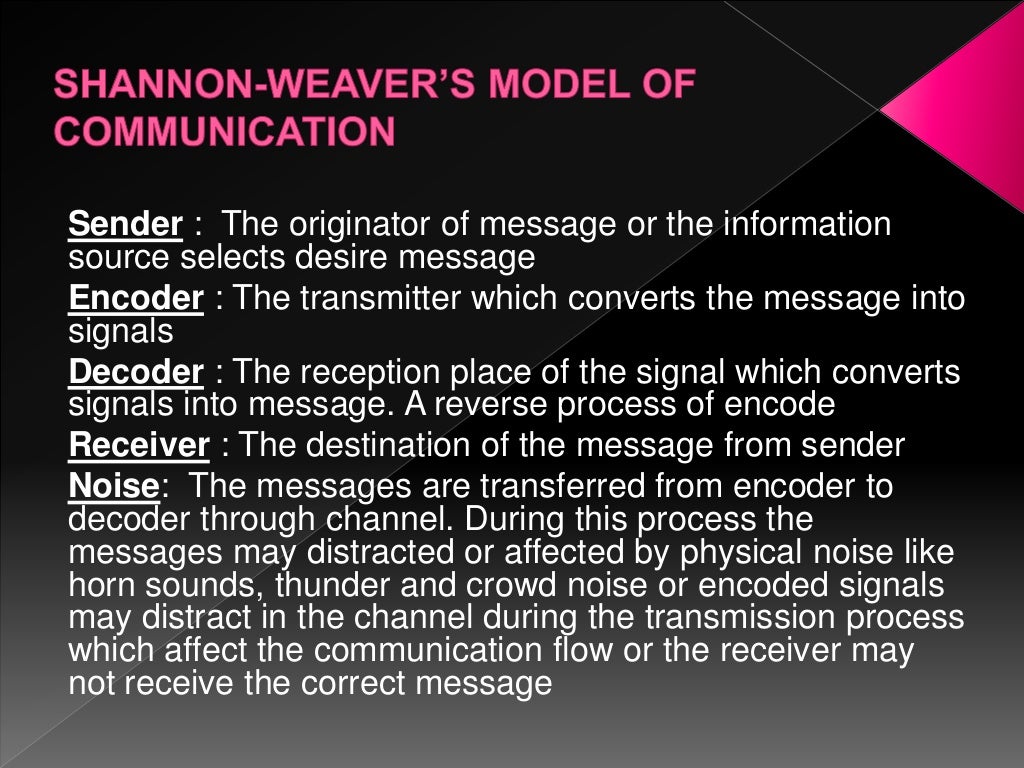
Shannon and weaver model of communication
The Shannon-Weaver model introduces 5 key stages to the communication process: The sender The encoder The channel The decoder The receiver The sender is the person, group or organisation that first thinks of the message that they want to communicate. The encoder takes this message and turns it into signals.

Shannon and Weaver Model of Communication
PDF. 4 Excerpts. While Shannon was focused on engineering aspect of his theory, Weaver developed the philosophical aspects of this theory related to human communication and extended and applied Shannon's information theory for different kinds of communication. In 1949 an engineer and researcher at Bell Laboratories, named Shannon, founded an.

ShannonWeaver's Model of Communication YouTube
Shannon-Weaver Model. Shannon and Weaver were both engineers for the Bell Telephone Labs. Their job was to make sure that all the telephone cables and radio waves were operating at full capacity. They developed the Shannon-Weaver model, which is also known as the linear communication model (Weaver & Shannon, 1963).21 As indicated by its name.
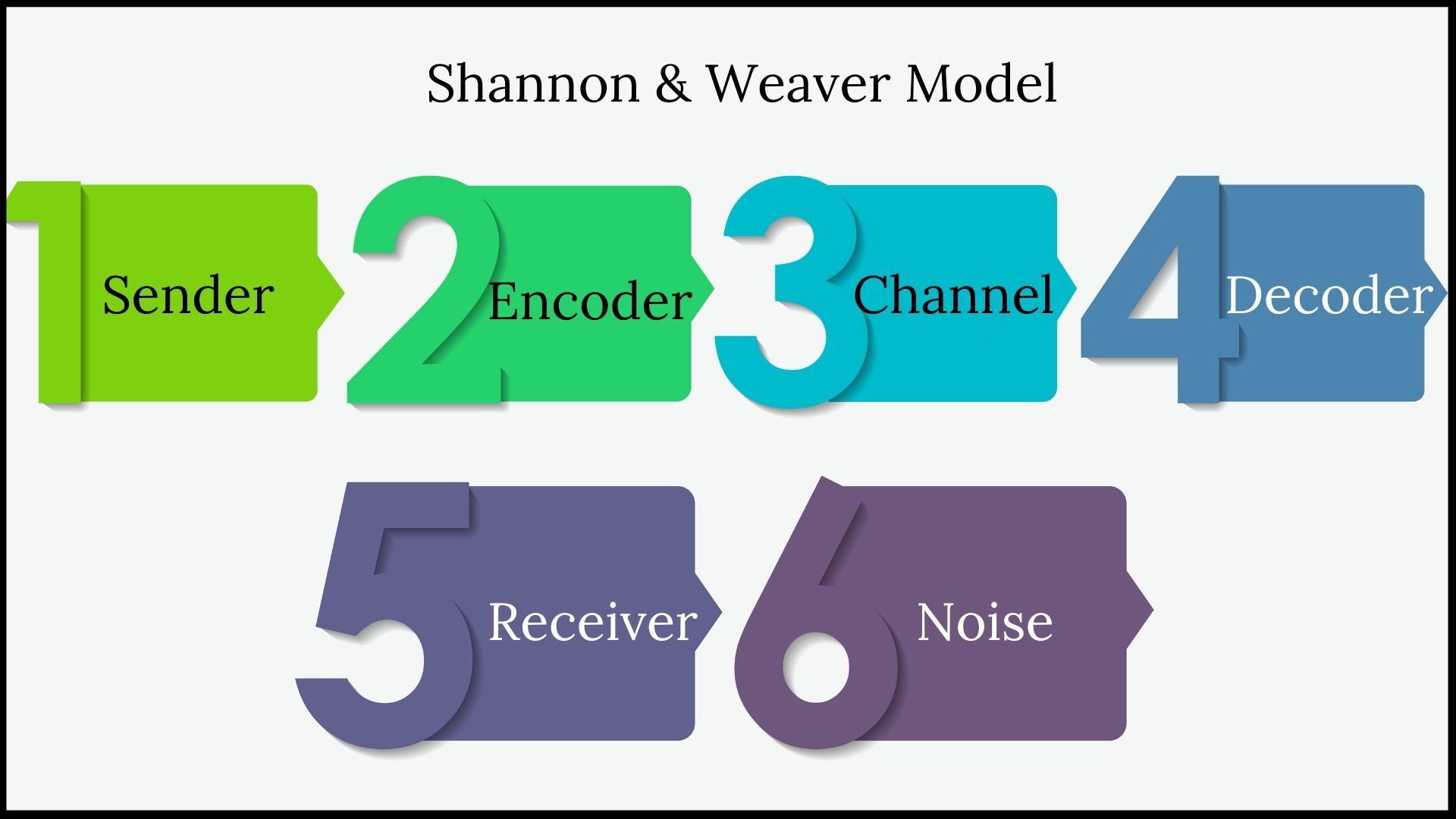
Shannon and Weaver Model of Communication Marketing91
The Shannon and Weaver model of communication is probably the best known of all communication models. This video demonstrates the two reasons behind its popularity: (1) it identifies the most important components of any communication process, and (2) it diagrams how those components interact.
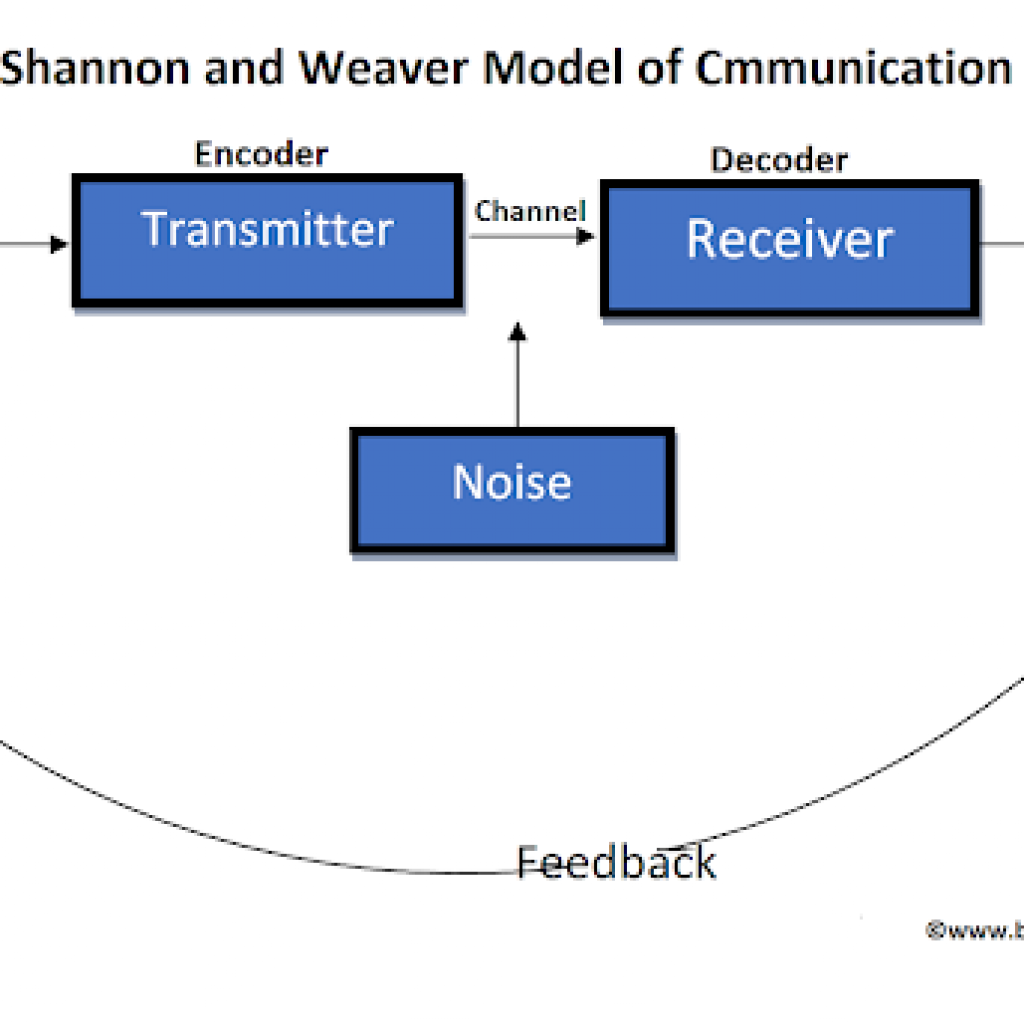
Shannon and Weaver Model of Communication
In 1948, Shannon was an American mathematician, Electronic engineer and Weaver was an American scientist both of them join together to write an article in "Bell System Technical Journal" called "A Mathematical Theory of Communication" and also called as "Shannon-Weaver model of communication".

Blog Post 2Blog Post 2 Shannon and Weaver’s Communication Hello I am Cici
A case is presented for separating Shannon's (1949) paper on information theory from Weaver's introduction, which is shown to contain distortions, as well as proofs by coincidence and homonym. Shannon's mathematical tools and methods are distinguished from his theory, which consists of 23 theorems setting forth the conditions for maximum.

Shannon and Weaver Model of Communication PDF
Shannon and Weaver Model of communication: A comprehensive overview of its Origins, Components, and Applications Share via: Facebook Twitter LinkedIn More Contents hide 1Introduction
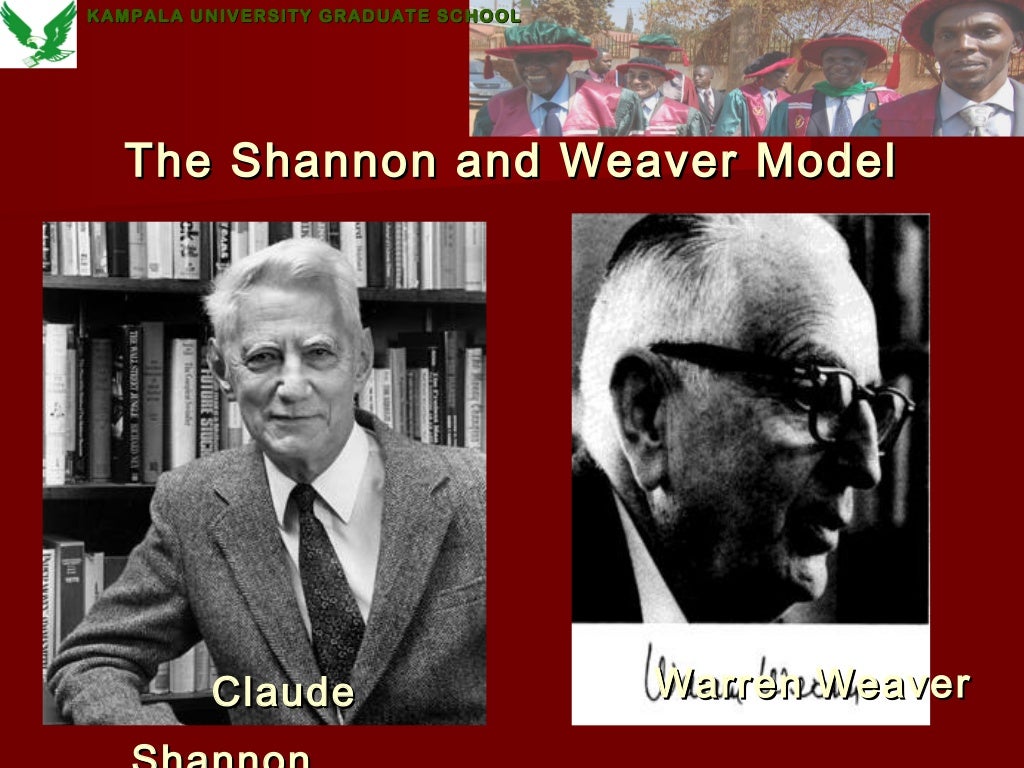
shannon and Weaver Communication Model
The Communication Cycle model is a linear model of communication that provides a schematic representation of the relation between sender, message, medium/ media and recipient. It was developed by Claude Elwood Shannon and Warren Weaver. Communication is a very complex process that happens orally, in written form as well as in non-verbal form.
